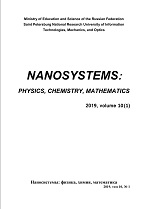|
This article is cited in 1 scientific paper (total in 1 paper)
PHYSICS
Random number generator for cryptography
R. Sooratab, K. Madhuria, A. Vudayagiria
a R. C. Bose centre for cryptology and security, Indian Statistical Institute, Kolkata, India
b School of Physics, University of Hyderabad, Hyderabad 500046, India
Abstract:
One key requirement for many cryptograhic schemes is the generation of random numbers. Sequences of random numbers are used at several stages of a standard cryptographic protocol. One simple example is a Vernam cipher, where a string of random numbers is added to message string to generate encrypted code. $C=M\oplus K$. It has been mathematically shown that this simple scheme is unbreakable if key $K$ is as long as $M$ and is used only once. The security of a cryptosystem shall not be based on keeping the algorithm secret but solely on keeping the key secret. The security of a random number generator (RNG) is related to the difficulty of predicting its future sequence values from past values. The quality and unpredictability of secret data is critical to securing communication by modern cryptographic techniques. The generation of such data for cryptographic purposes typically requires an unpredictable physical source of random data. We studied a chaotic circuit which consisted of an inductor, capacitance, diode and thus used for the BB84 protocol. We have studied both pseudo random and true random number generators and evaluated them through various tests like frequency, correlation, NIST etc.
Keywords:
Hardware random number generator, cryptography, chaos, chaotic circuit.
Received: 18.09.2017
Revised: 25.09.2017
Citation:
R. Soorat, K. Madhuri, A. Vudayagiri, “Random number generator for cryptography”, Nanosystems: Physics, Chemistry, Mathematics, 8:5 (2017), 600–605
Linking options:
https://www.mathnet.ru/eng/nano80 https://www.mathnet.ru/eng/nano/v8/i5/p600
|

|




 Contact us:
Contact us: Terms of Use
Terms of Use
 Registration to the website
Registration to the website Logotypes
Logotypes








 Citation in format
Citation in format 
